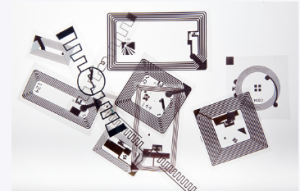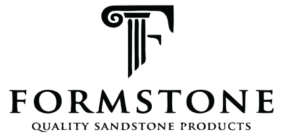An RFID reader can be an excellent tool for a business dealing with inventory management. This technology allows you to track your inventory, reducing the time you spend monitoring items and keeping your list as accurate as possible.
RFID technology reduces time spent on inventory
RFID technology helps retailers to track inventory throughout the supply chain. It also provides real-time merchandise location data. It allows for accurate stock counts and better business decisions.
 RFID enables retailers to reduce lost items and out-of-stock situations. In addition, it reduces the cost of managing inventory. Modern solutions can also help to increase revenue.
RFID enables retailers to reduce lost items and out-of-stock situations. In addition, it reduces the cost of managing inventory. Modern solutions can also help to increase revenue.
For example, Nike implemented RFID in its footwear and apparel in Q1 2019. They hope that increased visibility will streamline production processes and improve gross margins.
Similarly, Lululemon began implementing RFID technology in its stores in 2014. Again, the company prioritised fixing shrinkage and improving inventory accuracy, intending to achieve high-efficiency and low-cost operations.
Walmart, one of the world’s largest retail companies, uses RFID to track its inventory. As a result, it has become a leading supply chain company.
Similarly, Myer, a leading Australian department store chain, started piloting a custom RFID solution. It allowed the retailer to expand its omnichannel strategy rapidly. During the pilot, a customised RFID technology solution helped the company deliver real-time, accurate knowledge of all products across the supply chain.
In addition to reducing out-of-stocks and errors, modern solutions can also help to increase full-price sell-through. Specifically, they can decrease inventory-related labour hours and reduce theft.
While RFID is effective in various industries, the apparel industry has been a leader in using the technology. Among other applications, it can be used in warehousing, logistics, and distribution.
Implementation of RAMP_RFID RFID reader technology is a complex process that requires careful planning and coordination with vendors and third-party suppliers. In addition, specialised software is included in a complete RFID technology solution.
Strategic integrators are essential to successful RFID implementation. These partners provide end-to-end expertise and vendor-agnostic advice. They can also create data roadmaps to guide an organisation’s progress through implementation.
Retailers need to take an agile, end-to-end approach when implementing RFID. It will require cross-functional changes to improve store processes, product design, and merchandising. Additionally, they must be ready to test and refine their solution rapidly.
Lastly, RFID can increase customer satisfaction and reduce the complexity of inventory management. It can also help to keep in touch with customers.
RFID improves accuracy
RFID is a technology that can improve your inventory management process. It can help reduce human error and reduce labour costs. You can also use it to track shipments and analyse customer behaviour. With this information, you can better manage your supply chain and increase your profit margins.
The University of Leicester recently studied the impact of RFID on retailing. The results showed that RFID increases inventory accuracy and visibility and can speed up supply chains.
In addition, it can save time and effort for warehouse workers. For example, inventory checks can be done in minutes instead of hours. And it can alert you if you receive incorrect shipments.
Another benefit of using RFID is that it increases the ability to trace products from the factory to the customer. It can help retailers improve customer service. Using RFID can also reduce the risk of out-of-stock situations.
One of the best things about RFID is that it allows you to complete a count of items in a single operation. It is especially important if you have large warehouses. In addition, unlike traditional inventory systems, RFID can scan multiple tags at once, which cuts down on the amount of time it takes to scan objects.
RFID can reduce cycle count time by up to 96 per cent. It is because the antennas used by RAMP_RFID RFID reader don’t need to be in direct contact with a tag. Instead, they pick up the signal from an RFID tag and pass it on to your warehouse management system.
RFID can alert you if you’re loading the wrong items onto pallets. It can decrease costs since you won’t have to spend money on storing unused goods. Plus, you’ll be able to reduce downtime by improving your stocking and picking processes.
Aside from improving inventory accuracy, RFID is an ideal solution for warehouses because it can reduce inventory bottlenecks. It can also enhance the speed of checkouts. If you have a large inventory, you can quickly increase your throughput.
The price of RFID has decreased recently, helping to spark more adoption. However, if you’re interested in RFID, weighing the savings against the cost of your new technology is crucial.
RFID is a customer service
RFID is a technological process allowing you to track inventory in real-time. Using RFID helps retailers control costs and improve productivity. It also helps to increase sales.
The benefits of utilising RFID include faster processing, better visibility, and reduced labour. However, ensuring the systems are suited to the industry in question is crucial. There are many factors to consider, including overall expectations, the environment, and the required solutions.
RFID can track high-value items such as industrial containers and finished products. Additionally, it can help you locate misplaced or stolen assets. You can also use it to determine the age of uniforms and other items.
Using RFID can also increase customer satisfaction. For example, if you have accurate inventory numbers, you can prevent out-of-stock items. Similarly, you can increase the efficiency of your staff by reducing the amount of time spent on inventories.
In addition, you can track items from the point of origin to the finished product. It is especially helpful for ecommerce, where accurate inventory numbers are critical.
RFID can also make it easier to control shrinkage. By scanning items, you can reduce manual labour hours by as much as 15%.
RFID can also be used for automated inventory picking and packing. Employees no longer have to scan each item one at a time. Instead, they can go to a specified location and retrieve the information needed.
With an RFID system, you can easily track the movement of items throughout the warehouse or store. For example, an employee can get an alert if a trolley gets low.
If you are considering implementing an RFID system, it is best to consult a supply chain expert. They can help you determine whether the technology fits your business and provide additional support.
Besides boosting customer satisfaction and improving productivity, RFID can also help reduce theft. It can notify workers if they attempt to steal items.
To be effective, RFID requires a commitment to cross-functional changes. Depending on your needs, you may need to invest in costly equipment or hire experts to help install and maintain the system.
